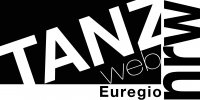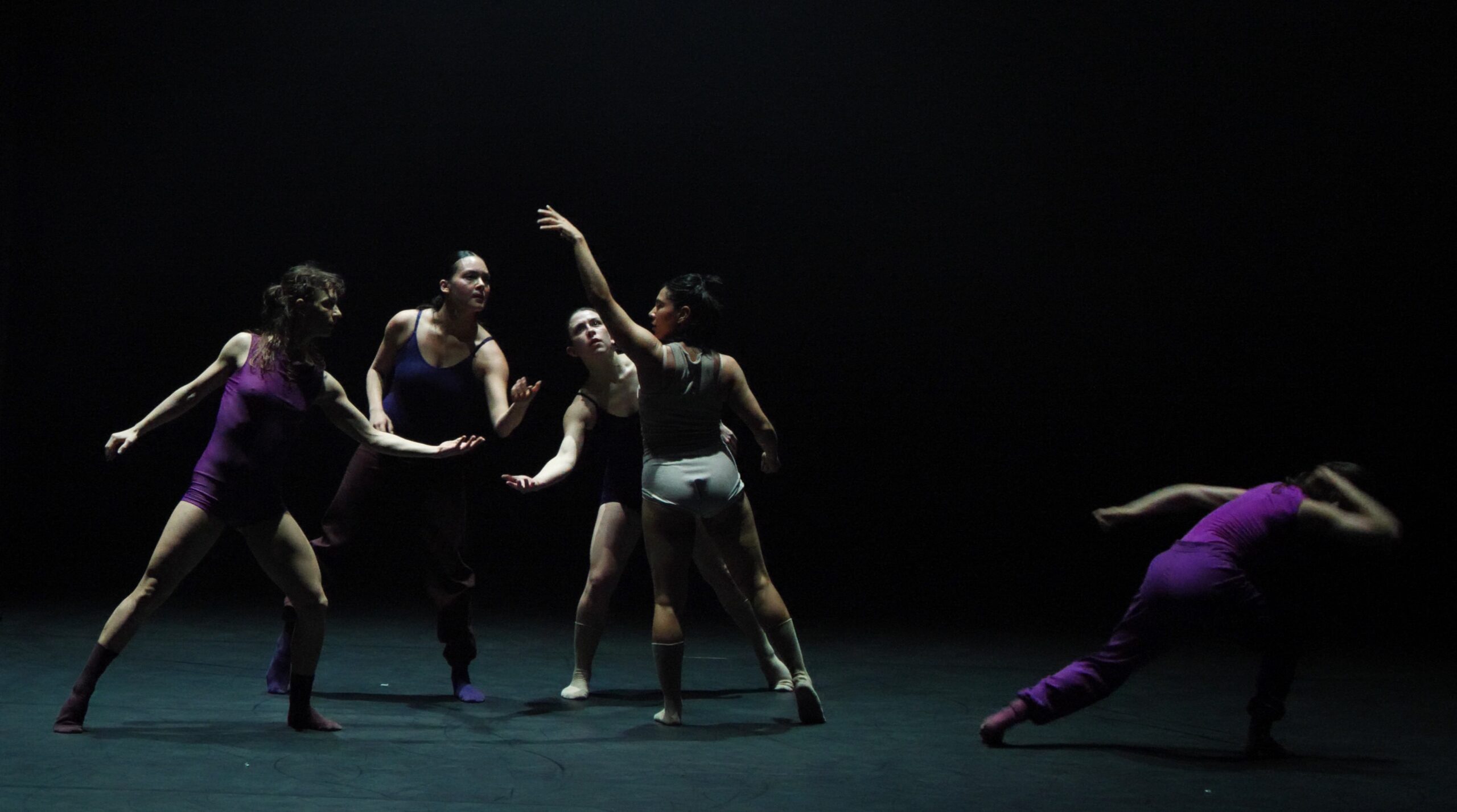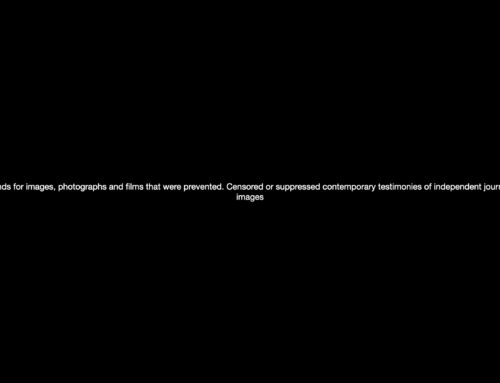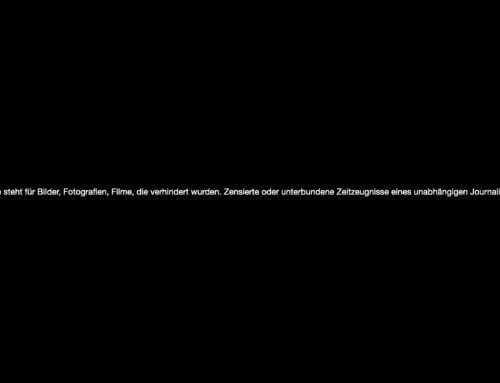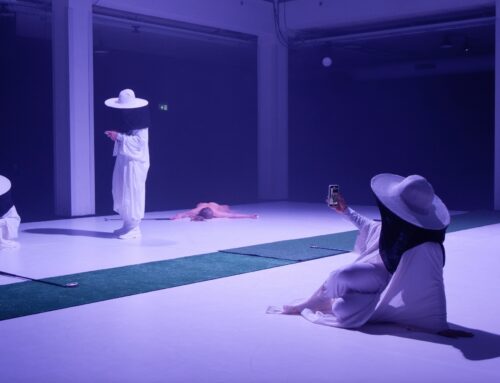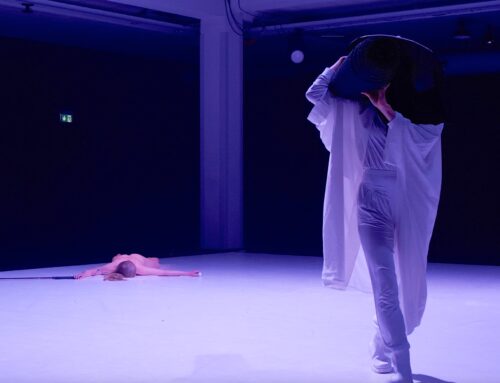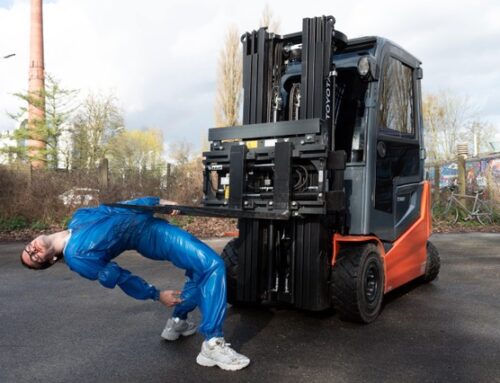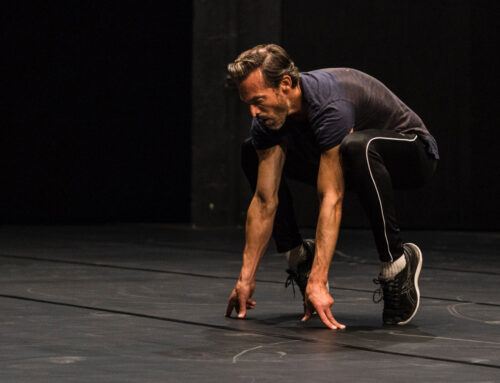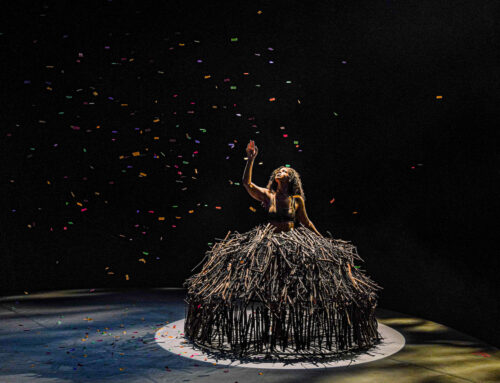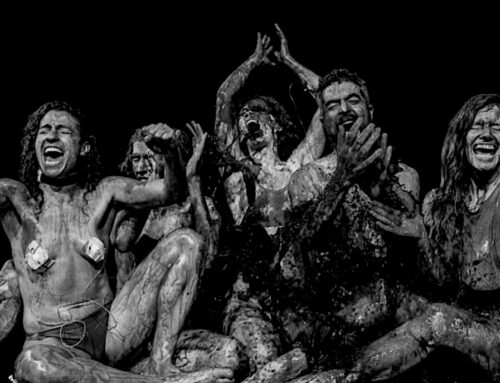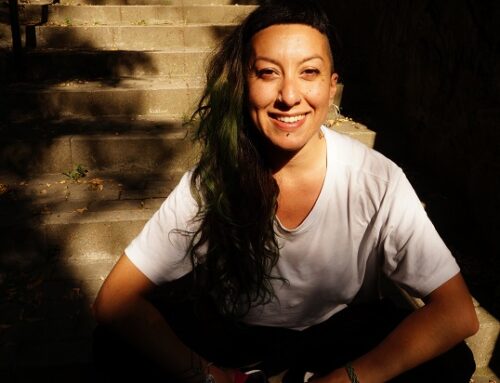‘Myokine’ by Anne Plamondon at the Stahlbau Strang factory in Aachen
The stuff that healing is made of
by Natalie Broschat
Canadian companies are very popular guests in Germany: Out Innerspace – directed by Tiffany Tregarthen and David Raymond – contributed the choreography ‘Force Majeure’ for the Hessisches Staatsballett in 2023, which can currently be seen again in the anniversary evening ‘Chronicles’. Company 605 was once again a guest at the Heidelberg Dance Biennale in February 2023 and the outstanding choreographer Crystal Pite and her company Kidd Pivot are an integral part of the German dance scene. Crystal Pite opened this year’s schrit_tmacher with ‘Figures in Extinction’ for the NDT 1.
Choreographer Anne Plamondon and her dancers have danced in these companies themselves. Anne Plamondon also worked for a long time in Victor Quijada’s RUBBERBAND company, whose movement method of the same name she teaches worldwide. In 2018, the dancer and choreographer founded her own company (Anne Plamondon Productions). Her choreographic style is characterised by gliding, sweeping and swinging movements that immediately fill the space. This is also the case in the atmospheric and sensual dance piece ‘Myokine’, which celebrates its European premiere at schrit_tmacher 2025.
In ‘Myokine’, the seven dancers Eowynn Enquist, Isak Enquist, Diana Leon, Léa Ved, Justin Rapaport, Alyssa Allen, Raphaëlle Sealhunter and Jake Poloz explore ‘the human body as a source of resilience, beauty and hope’. Myokine is made up of the Greek words ‘myo’ for muscle and ‘kine’ for movement and refers to the proteins in the body that are produced by the muscle cells and released when the muscles are under intense strain. Myokines are anti-inflammatory and support and strengthen the immune system; they are also called hope molecules because they convey a feeling of well-being and optimism. And Anne Plamondon now sees this process as a physical anchor point in our crisis-ridden times.
That’s why the seven wonderful dancers are in constant motion on the empty stage throughout the piece, surrounded by sparse strips of light that create an incredibly dark atmosphere. In between, they speak pessimistic sentences into a microphone descending from the stage sky. What they say is ‘heavy’ and ‘dark’, not very hopeful or positive. Their costumes, designed by Marie-Audrey Jacques, are also dark and sleek and are soon replaced by beige-coloured, sometimes unflattering underwear.
The dancers present group, duo and short solo sequences in the quality of movement described as swinging. However, the exact story or stories to be told is sometimes unclear and the transitions from one scene to the next are abstract and mysterious, leaving the audience in the dark. The intensity of the movements is imperceptible and, in combination with Eric Chad’s always gloomy world of light, there are no clear contrasts. Even the energetic and driving music by Olivier Fairfield and Ourielle Auvé sometimes finds it difficult to emerge from this all-encompassing gloom. The seven dancers have filled the stage with molecules released through movement and at the end they blow at least some of these myokines and thus also a little bit of hope into the audience; but that could have been much, much more intense.
‘PARADE’ by Karl von Monschau in the entrance area
Two works by Aachen artist Karl von Monschau are on display in the entrance area of the Stahlbau Strang factory until 13 April. ‘PARADE’ quotes the ballet created by the Ballets Russes in 1916/17, which was directed by Sergei Dyagilev. ‘Parade’ was choreographed by Léonide Massine to music by Erik Satie, Jean Cocteau contributed the story and Pablo Picasso decorated it in a cubist style. Monschau’s second work ‘PARADE II’ is a collage of three blurred photographs with yellow elements and honours the dance organiser and dance producer Anne Neumann-Schultheis, who died in 2016.
